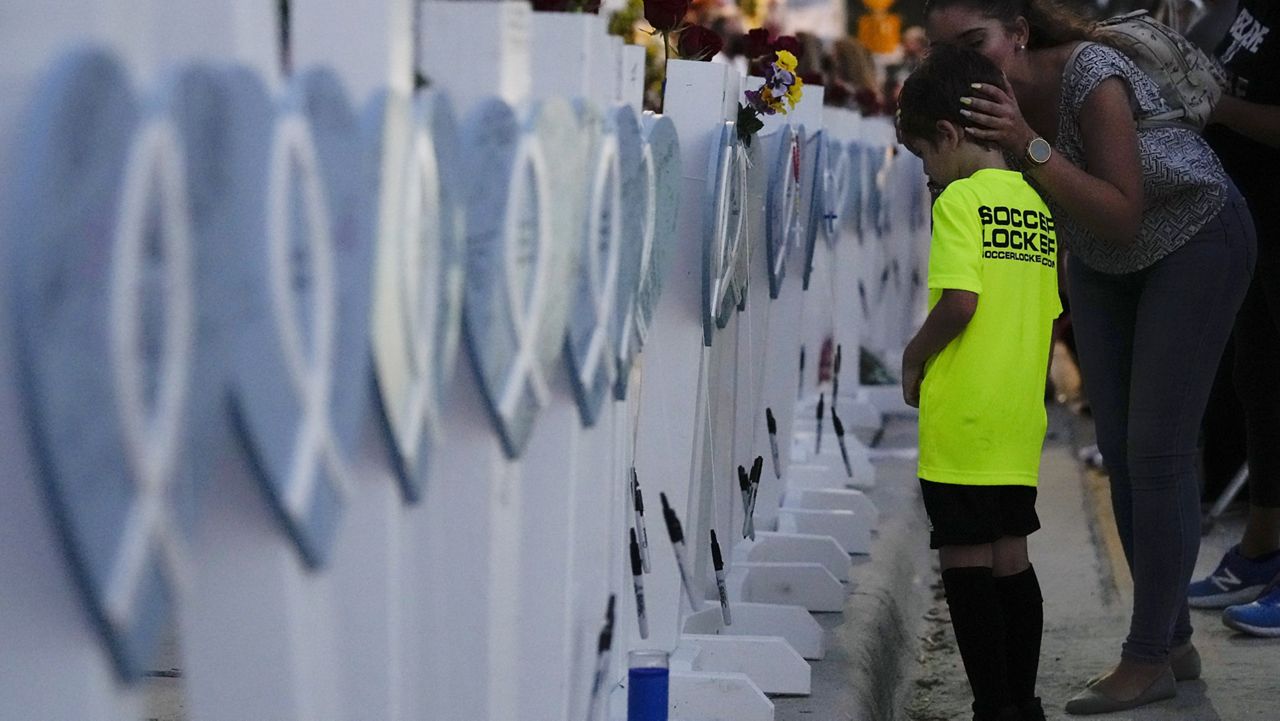Firefighters have ended their mission in clearing debris from the collapsed Surfside condo building Friday, officials said, while police and forensic specialists continue their work to identify human remains in the disaster.
At least 97 people were killed in the June 24 collapse, and at least one more person believed missing in the disaster has yet to be identified.
Miami Dade Assistant Fire Chief Raide Jadallah told The Associated Press that the fire department’s role in recovering remains at the collapsed Surfside condominium has finished.
They left the site in a convoy of fire engines and other vehicles and drove slowly to their headquarters.
"Proud to recognize our amazing first responders and their extraordinary efforts at #Surfside," Florida's Chief Financial Officer and State Fire Marshal Jimmy Patronis wrote in a Twitter post Friday. "They worked in awful conditions and didn’t stop."
The disaster site in Surfside is empty now, but it remains a challenge for local officials. An engineer hired to help figure out why the building collapsed warned that the site may still not be safe.
Structural engineer Allyn Kilsheimer told Surfside and Miami-Dade officials in a letter Thursday that Collins Avenue could crumble because a remaining perimeter wall near the road could fail. The development was first reported Friday by the Miami Herald and WPLG.
“We believe there is a potentially dangerous situation at the site, where the wall is in danger of collapse,” Kilsheimer wrote.
All that remains of the Champlain building are the walls of the underground parking garage, around a hollowed-out foundation, and Kilsheimer says that without more support for those walls, nearby traffic could make them collapse, with parts of the street falling into the void.
“If the wall were to collapse or rotate substantially, the retained soil under the street and sidewalk could move with it,” wrote Kilsheimer, of KCE Structural Engineers.
He recommends building an earthen berm to support the walls near the street and sidewalk. Otherwise, the movement “could cause portions of the street to collapse and could seriously compromise the utilities under the street,” he wrote.
Miami-Dade County is bringing in crews to help shore up the remaining underground walls, Rachel Johnson, the county’s communications director, told the Herald.
“We are moving to procure a company to do shoring and bracing of the walls to assure there is no risk,” she said.
The National Institute of Standards and Technology, a federal agency investigating the collapse, has been monitoring the site’s safety.
Collins Avenue, which is the major thoroughfare on the barrier island, has been closed to traffic near the site since June 24, but town officials had said Collins Avenue would be opening soon.
In the letter, Kilsheimer said heavy rain would increase the risks substantially because the ground becomes saturated with water.
The Associated Press contributed to this report.



